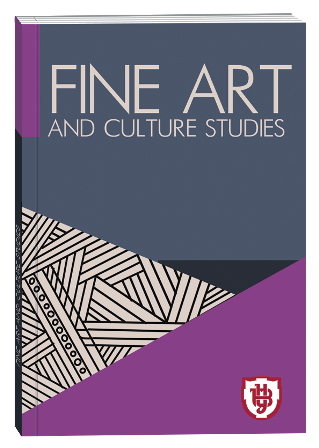SOLO CELLO WORKS OF THE LATE 17TH – EARLY 18TH CENTURY AS AN INDICATOR OF THE DEVELOPMENT OF WESTERN EUROPEAN PERFORMING ARTS
DOI:
https://doi.org/10.32782/facs-2023-4-3Keywords:
cello solo, Western European musical performance, art, rhetorical aspect, Baroque era, Italy, technical development, instrumentalistsAbstract
The purpose of the article is to reveal the specifics of the solo cello repertoire of the end of the 17th and beginning of the 18th centuries, to assess the pedagogical, compositional, and performance level of such works and their role in the overall development of the musical culture of Western Europe during the Baroque era. Methodology. Historicalcomparative, intonation-stylistic, structural-systemic methods are used in the article to characterize the specifics of the solo cello repertoire of the late 17th and early 18th centuries. Methods of comparative and musicological analysis were used to establish the genre-stylistic and functional features of cello works of the Baroque era. Scientific novelty. The article examines and compares two collections of solo cello works written in the period 1689–1720 in Italy: «7 Ricercare for solo-cello» (1689) by Domenico Gabrielli and «Principij da imparare a suonare il violoncello e con. 12 Toccate a solo» (1720) Francesco Supriani [Francesco Supriani]. Conclusions. The musical education of the Baroque era, the main requirement for performing music is the requirement of expressive and conversational playing. This material in a practical aspect introduces us to such features of the development of the instrument's rhetorical and technical capabilities, basic performance techniques, and expressive means that existed during the period of writing the opus. For example, the use of open strings was one of the requirements in musical performance. It was because at that time the upper positionson the in strument were not (actively) used. The solo cello pieces considered in the collections reflect how cello performance development took place within the general development of Western European music and performance art. Ananalysis of the tonal plan and conditional genre-style review of the musical material was carried out, the main technical difficulties faced by the performer during the performance of pieces were indicated, and practical advice was given to cellists – instrumentalists, which will help to decipher the text more accurately and perform works as closeas possible to baroque stylistics.
References
Арнонкур Н. Барокова музика як розмова : шлях до нового розуміння музики / пер. з нім. М. О’Ніл. 1995. 210 с.
Коденко І. Історичне виконавство як тенденція музичного мистецтва останньої третини XX – початку XXI століття : автореф. дис. ... канд. мист – ва : 17.00.03. Суми, 2021. 20 с.
Корретт М. Теоретичний та практичний методи гри на віолончелі. Париж, 1741. 53 с.
Ніколаєвська Ю. Аутентична виконавська стратегія та її сучасні трансформації. Аспекти історичного музикознавства. 2017. Вип. 10. С. 180‑198.
Сумарокова В. Історичні типи віолончельного виконавства в Україні. Наукові записки Тернопільський державний педагогічний університет ім. В. Гнатюка. Мистецтвознавство. 1999. № 2 (3). С. 84‑89.
Туріна Дж. Анотація до CD «Франческо Супріані (1678–1753) : Принципи навчання гри на віолончелі». URL: https://www.youtube.com (дата звернення : 25.08.2023 р).
Туріна Дж. Франческо Супріані (1678–1753) : Принципи навчання гри на віолончелі. Eighteenth – Century Music. Cambridge University Ptess. 2018. вип. 1. С. 97-99. DOI: https://doi.org./10.1017/S1478570617000550.
Kosciukiewicz J. Wiolonczela w epoce barocu. Cz. I. Notesu Muzyczny. Lodzi. 2018. № 1 (9). P. 9‑42. DOI: https://doi.org./10.5604/01.3001.0012.9895.
Vanscheeuwijck M. The Baroque Cello and Its Performance. Performance Practic Review. 1996. Vol. 9. № 1. Article 7. P.78 – 96. DOI: https://doi.org./10.5642/perfpr.199609.01.07.
Encyclopadia Britanica. URL: https://www.britannica.com (дата звернення : 27.08.2023 р.).







